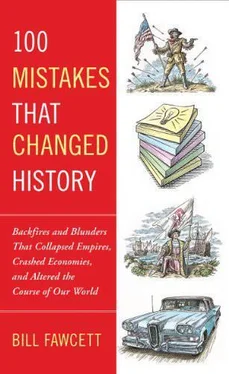The former king, a leper, had just died, and Guy of Lusignan was elected king by nobles and military orders. He was not a generally popular choice and was painfully aware of his lack of support among those who controlled the bulk of the Christian knights. Unfortunately, some of those knights were also his biggest problem. Even before Guy had taken the throne, some of the nobles had begun raiding the trade caravans of the Islamic merchants. Along with being bad for business, this broke the treaty between the Christian and Islamic kingdoms. The attacks were most definitely a cause for war and also a demonstration that Guy of Lusignan did not really rule most of his new kingdom.
Threatening the Christian kingdom and its new king was Salah ad-Din Al-Ayyubi, who ruled the Islamic world from Damascus to Cairo. He is known as Saladin in Western history. He had risen to power mostly because of his military skills and charisma. Saladin had won his way to general and had become the most important military leader of the Fatimid caliphs. Eventually, he was so well-thought-of that he was elevated to the throne left vacant when the last caliph in Damascus died without an heir. Even as caliph, Saladin remained a relentless warrior with notorious cunning; he was also known for his strong sense of honor and for protecting the common people. His reputation for chivalry was famous even in Europe. Although the leader of the largest Islamic empire of his time, he is remembered even today as being the fair and just protector of several nearby Christian lands that had also suffered at the hands of the crusaders.
Saladin could not allow the attacks on his merchants to continue. The raids were both an act of war and a challenge. When Guy proved unable to restrain his subjects, war was inevitable. But it was not the decision to go to war that put Guy of Lusignan on the list of people who made the greatest mistakes in history, but it was how he fought that war. Once more we have a case in which a leader takes an army that has tremendous strengths and puts it in a position where those strengths are unusable and the enemy’s strengths are emphasized instead. And once more we see this happen because of a king who put his own interests before those of his nation.
The castles of Outremer, and her walled cities, were thick, strong, and almost impregnable to any weapon Saladin could command. This was before the use of gunpowder and a fifteen-foot-thick, forty-foot-high wall enabled even a few dozen men to hold off hundreds. The main field strength of the Christian army was their heavily armored knights. The chain mail and metal armor of the Christian knight meant that on a similarly armored horse, he was nearly invulnerable to the arrows that were the primary weapon of most of Saladin’s horsemen. The armor also served the knights well in resisting all but the most skilled thrusts and slashes of the familiar curved cavalry sword that was used in close combat by Saladin’s light cavalry. The disadvantage of the armor was that Outremer is located in one of the hottest climates in the world. Being in the armor too long made a knight vulnerable to dehydration and heat stroke, both of which could be fatal.
Most of Saladin’s Islamic army was made up of unarmored horsemen who shot bows from the saddle. Backing up these horse archers were more heavily armed and armored nobles and their followers. Even these wealthy horsemen wore only relatively thin and light armor. Although less protected, they were also less vulnerable to the heat. Perhaps the most important difference was that Saladin’s army was at least five times the size of the largest force Outremer could gather.
In his castles, Guy of Lusignan and his kingdom could easily repel any attack by any number of Islamic horse archers and nobles. But he was new and not established on the throne. Guy needed not only to repel any attacks but also to demonstrate he was a strong leader. By doing this, he would have rallied the support he needed to maintain his throne and gain the upper hand on Outremer’s highly independent nobles. So instead of waiting for Saladin to throw himself against stone walls, Guy decided to gather an army, the largest he could, and go out and defeat Saladin in battle. But to gather enough trained soldiers and knights, the Christian king had to strip all of the garrisons from the castles. This meant that if he lost, there would not be enough men to defend the massive and expensive fortifications. It would be an all-or-none risk, not for the good of Outremer, but for the benefit of King Guy.
On July 2, 1186, the largest army Outremer had ever seen marched out with King Guy at its head. To ensure the righteousness of their cause, monks carried a piece of the True Cross in front of the army. That relic was considered the greatest treasure in the kingdom. Behind them, they left castles, often garrisoned by less than a dozen men, and cities with just enough men-at-arms to maintain order.
Between the Christians and Saladin was a stretch of brutally dry desert. Almost as soon as the Outremer army entered the dry wasteland, they came under continuous attack by Muslim horse archers. Each attack forced the column to slow or stop until knights could gather and drive the light horsemen off. By evening, the Christian army had traveled less than half as far as planned. They were still several hours short of any wells. But marching in the dark left the column even more vulnerable, so it was decided to make a dry camp. This is significant because it meant their horses also went thirsty or drank up much of the water that was on hand.
By the second day, the lack of water was becoming a real concern. What few wells the army could use were unable to supply enough water for such a large number of men and horses. Saladin’s horse archers caused few casualties, but the constant threat of arrow fire meant that everyone had to stay in their armor, metal or padded. The hot sun and a lack of water soon caused men to collapse and horses to flounder. Anyone left behind was killed. By the end of the second day of marching in armor in the desert heat, the forces of Outremer were reeling with exhaustion and thirst.
As the sun set, the army staggered up two hills, the largest of which was said to have a good well at its top. These hills were named the Horns of Hattin. There was no relief. Saladin had collapsed the stone walls surrounding the well into it, making the water below impossible to reach. In the distance, the Christian army could see two lakes that were less than two hours’ march away. They contained more than enough water to relieve any thirst and replenish their supply. The problem was that Saladin’s entire force waited between the knights and the lakes. But the position on the Horns of Hattin was strong because the steep hills were easy to defend and slowed any mounted attacks. So Guy ordered yet another dry camp.
By morning, the Islamic army had completely surrounded the two hills and the army on them. Trapped with no water, the knights and men-at-arms endured hours of a near-constant rain of arrows. They could barely move within the camp, much less organize to fight a major battle. Horses began to die from heat and thirst. Men soon followed. A few of the nobles gathered their followers and tried to break out. Balian of Ibelin and a few hundred knights actually cut their way through the surrounding horsemen and managed to escape the trap. He turned to see if he could help relieve those still inside and was confronted by ten times his number of Islamic riders charging toward his small force. He wisely turned and fled, eventually becoming one of the few survivors. Reginald of Sidon led another breakout and also escaped. He was the last to do so.
After hours, a good number of the Outremer infantry had endured enough. They formed themselves into a solid mass of men and tried to push their way through to the lakes and the precious water. Every one of the hundreds of men were slaughtered before they even got close to the water.
Читать дальше












